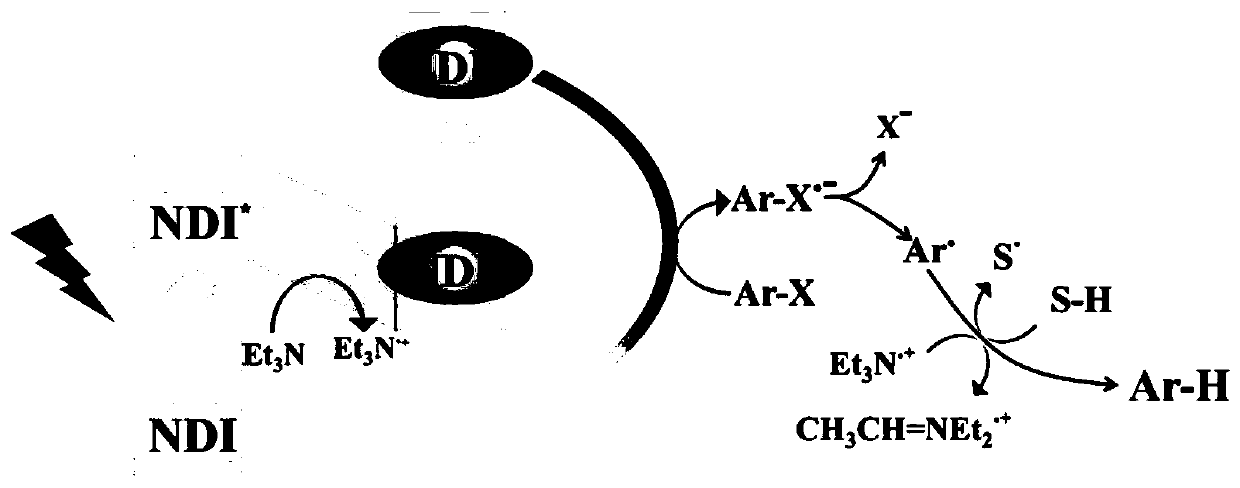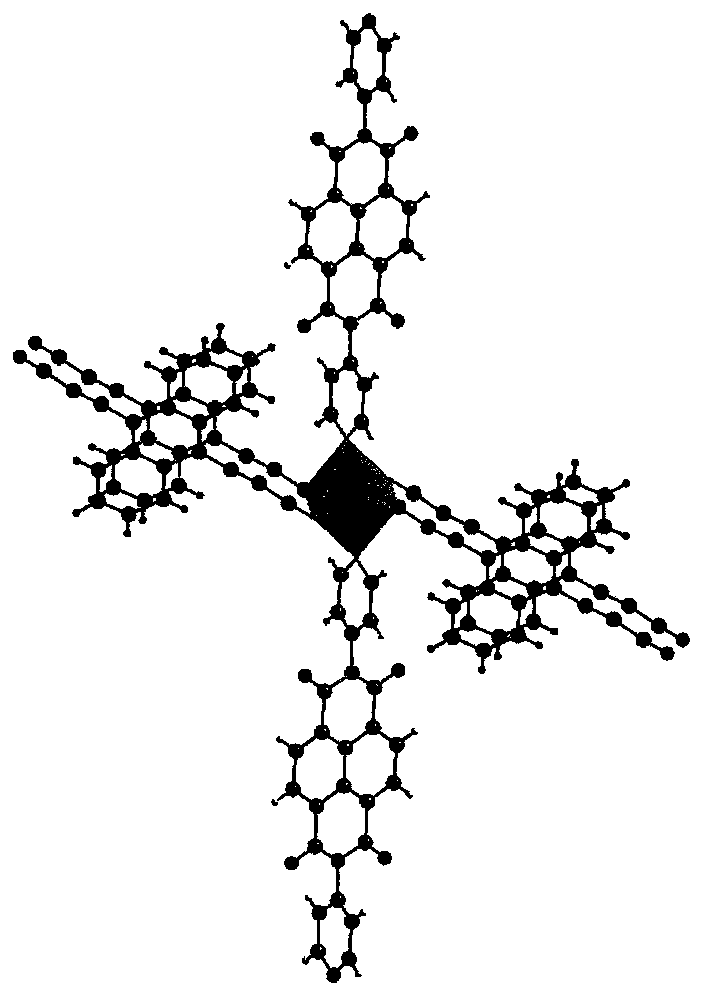Cumulative double-photon Z-type photocatalyst, and preparation method and application thereof
A photocatalyst and two-photon technology, which is applied in the field of cumulative two-photon Z-type photocatalyst and its preparation, can solve the problems of competition, restriction, and inability to meet the dissociation of carbon-halogen bonds and other problems of type II heterojunction, and achieve high efficiency. The effect of dehalogenation and photocatalytic dehalogenation
- Summary
- Abstract
- Description
- Claims
- Application Information
AI Technical Summary
Problems solved by technology
Method used
Image
Examples
Embodiment 1
[0030] Cumulative two-photon Z-type photocatalyst ADA-NDI-Cd
[0031] Material synthesis: ADA (10 mg), Cd(ClO 4 ) 2 or CdCl 2 (100-120 mg) and DPNDI (8-10 mg) were mixed and then added with 5-10 mL of DMF, ultrasonically dissolved and then added with 10-30 d of HNO 3 (1M), sealed in a 25 mL glass seed bottle, standing at 80°C for 12-16 h, light yellow-brown long strip crystals can grow, suck out the mother liquor immediately after taking it out of the oven, wash with DMF and dry naturally ADA-NDI-Cd samples are available for testing. The sample can be simply stored at room temperature for 60 days without inactivation.
[0032] The material ADA-NDI-Cd is crystallized in the triclinic system, P-1 Space group, each unit cell contains an ADA ligand, a DPNDI ligand, and a Cd 2+ ion. The two carboxyl groups of each ADA ligand adopt bidentate bridging coordination mode, respectively with two different Cd 2+ Ionic coordination; the two pyridyl groups of each DPNDI ligand adop...
Embodiment 2
[0041] Cumulative two-photon Z-type photocatalyst ADA-Mn-NDI
[0042] Material synthesis: ADA (10 mg), Mn(ClO 4 ) 2 or MnCl 2 (100-120 mg) and DPNDI (20-30 mg) were mixed and then added to 5-10 mL of DMF, ultrasonically dissolved and then added to 20-40 d of HNO 3 (1M), and finally add 5-10 mL of methanol, seal it in a 25 mL glass seed bottle, and let it stand at 95 °C for 16-24 h, then yellowish-brown flower-like crystals can grow, suck out the mother liquor immediately after taking it out of the oven, After washing with DMF, store it, and filter the ADA-Mn-NDI used in the test to dry it naturally.
[0043] The material ADA-Mn-NDI is crystallized in the triclinic system, P-1 Space group, each unit cell contains an ADA ligand, a DPNDI ligand and a Mn 2+ ion. The two carboxyl groups of each ADA ligand adopt bidentate bridging coordination mode, respectively with two different Mn 2+ Ionic coordination; the two pyridyl groups of each DPNDI ligand adopt a monodentate coordi...
Embodiment 3
[0045] Photocatalytic dehalogenation application
[0046] Preliminary comprehensive tests have shown that the material ADA-NDI-Cd can strongly stabilize the generated NDI radicals, and the cumulative two-photon absorption process can be completed in an air atmosphere. Oxygen has been isolated naturally, and the adjacent ADA ligand can strongly donate electrons to stabilize DPNDI .- , so the radical photocatalytic dehalogenation under air atmosphere can be realized. Electron paramagnetic resonance tests show that some free radicals naturally present in the material can be stable in the air for more than 60 days, while ultraviolet absorption and fluorescence tests also show that free radicals caused by secondary light can be stable for tens of minutes. It fully proves the possibility of photocatalytic application in air atmosphere.
PUM
 Login to View More
Login to View More Abstract
Description
Claims
Application Information
 Login to View More
Login to View More - Generate Ideas
- Intellectual Property
- Life Sciences
- Materials
- Tech Scout
- Unparalleled Data Quality
- Higher Quality Content
- 60% Fewer Hallucinations
Browse by: Latest US Patents, China's latest patents, Technical Efficacy Thesaurus, Application Domain, Technology Topic, Popular Technical Reports.
© 2025 PatSnap. All rights reserved.Legal|Privacy policy|Modern Slavery Act Transparency Statement|Sitemap|About US| Contact US: help@patsnap.com



